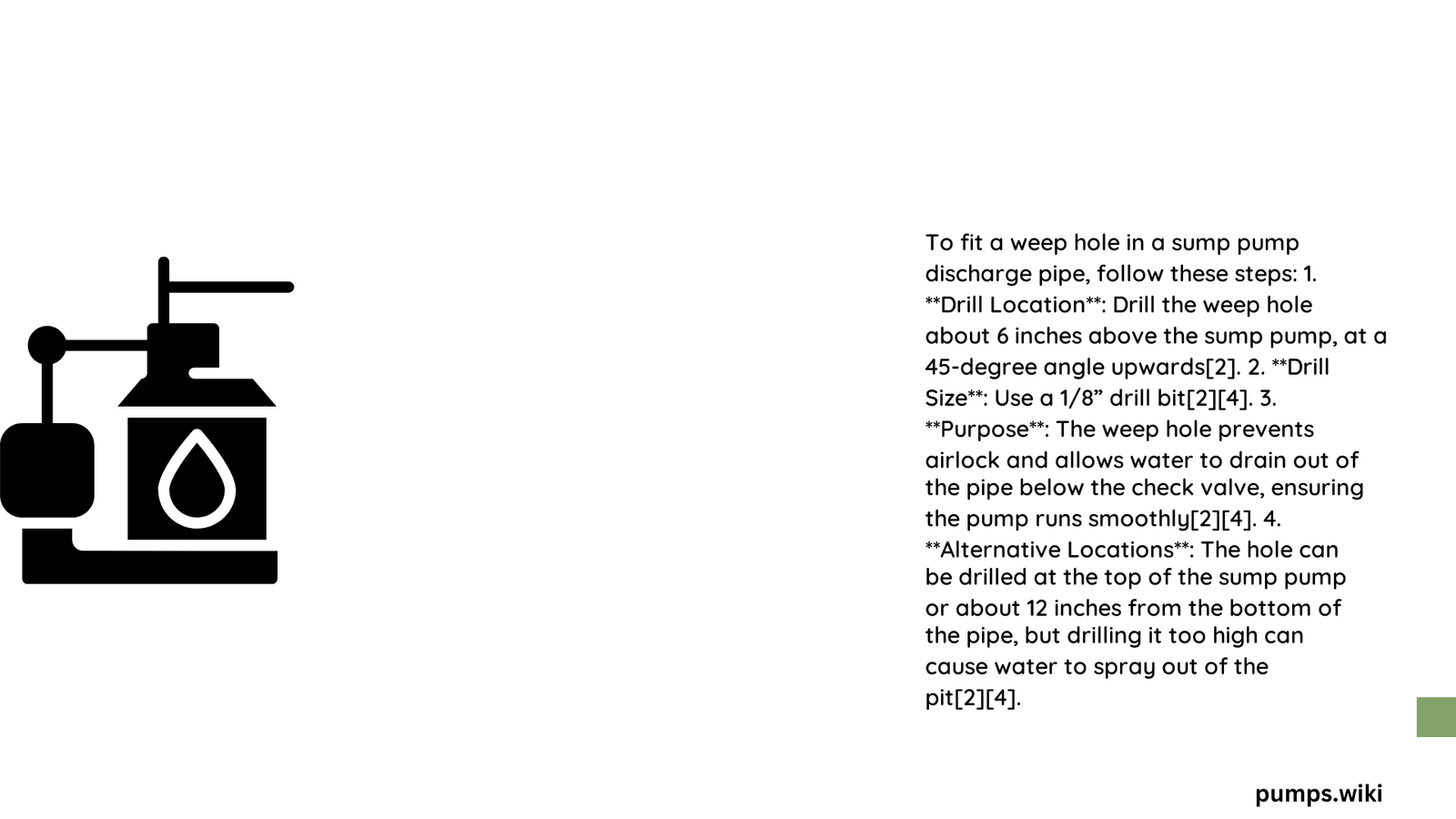Sump pump fittings exit hole configurations are critical for effective water management in residential and commercial spaces. These specialized components determine the efficiency of water discharge, preventing basement flooding and protecting structural integrity. Understanding the precise specifications, connection types, and installation techniques can significantly impact the performance and longevity of your drainage system.
What Are Standard Sump Pump Exit Hole Dimensions?
Sump pump exit hole dimensions are fundamental to proper water management. Here’s a detailed breakdown:
Diameter and Depth Specifications
- Pit Size: 18″ to 24″ in diameter
- Pit Depth: 22″ to 36″ typical range
- Discharge Pipe Sizes:
- 1.5″ (Most Common)
- 2″ (Alternative Option)
| Pipe Size | Flow Capacity | Typical Application |
|---|---|---|
| 1.5″ | 420 GPH | Residential Basements |
| 2″ | 600 GPH | Commercial/Large Spaces |
How Do Material Choices Impact Fittings Exit Hole Performance?

Material Considerations
Selecting appropriate materials is crucial for durability and performance:
- PVC Fittings
- Lightweight
- Corrosion-resistant
- Cost-effective
-
Suitable for most residential applications
-
ABS Fittings
- Higher impact resistance
- Better cold temperature performance
-
Slightly more expensive
-
Metal Fittings
- Extremely durable
- Higher cost
- Recommended for industrial environments
What Connection Types Exist for Sump Pump Discharge?
Connection Mechanisms
Sump pump discharge connections vary based on specific requirements:
- Threaded Connections
- Provide secure, tight seal
- Easy to replace
-
Require precise threading techniques
-
Slip-Fit Connections
- Quick installation
- Less labor-intensive
-
Potential for slight movement
-
Barbed Fittings
- Excellent for hose attachments
- Prevent accidental disconnection
- Require proper clamping
What Challenges Might Emerge During Installation?
Common Installation Obstacles
Professionals and DIY enthusiasts should anticipate potential issues:
- Head Pressure Limitations
- Calculate total vertical distance
- Consider friction losses
-
Match pump capacity with discharge requirements
-
Backflow Prevention
- Install check valves
- Ensure proper slope in discharge pipe
- Minimize potential water return
How Can Optimal Discharge Be Achieved?
Best Practices for Effective Water Management
- Maintain minimum 10-20 feet distance from foundation
- Create gradual slope in discharge pipe
- Use appropriate pipe diameter
- Regular maintenance and inspection
Cost and Time Considerations
Investment Breakdown
- Basic Installation: $100 – $300
- Complex Setup: $300 – $600
- Estimated Time: 2-8 hours depending on complexity
Expert Recommendations
Final Insights
- Always prioritize professional consultation
- Consider local building codes
- Invest in quality components
- Perform annual system evaluation
Reference:
– Water Commander Sump Pit Guide
– RadonSeal Sump Pump Sizing
– Basement Defender Discharge Guide
